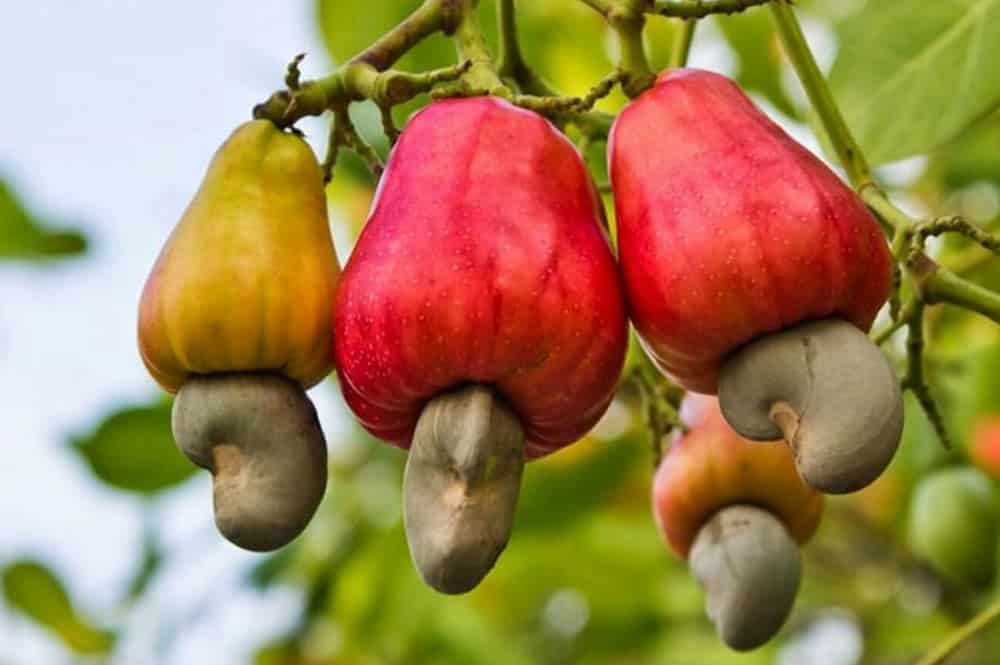ID CARD
Name : Anacardium occidentale
Habitat : This fruit is native to the Caribbean and Brazil but nowadays it is also cultivated in Africa, Asia and even the West Indies.
Size : The tree is 6 to 12 meters tall and has long leaves.
Way of life : The cashew is the fruit of a tree, which means it comes from a flower. Said flowers turn into fruit in two parts: the nut and a colorful appendix.
INTERESTING FACTS ABOUT THIS PLANT TO USE WHILE FLIRTING …OR NOT
The fruit of this cashew tree is special because it has two parts. The seed is only edible when cooked. This comes from the fact that the shell that contains the raw seed also contains a toxin, named urushiol, which is dangerous if ingested in large quantities. Cooking will therefore eliminate this natural poison. The second part of the fruit, called the “cashew apple”, changes color from green to red/orange and is also edible.
The bark of the tree is used as a remedy to heal wounds because it is enriched with tannins. As for the leaves, they can be used to regulate the digestive system.
Written by Marie Ulmann
Translated by Nour El Ghazal
Sources :
- https://herbier-guyane.ird.fr/initier-botanique/plantes-en-vrac/plantes-toxiques/noix-de-cajou/
- https://quebec.huffingtonpost.ca/2016/03/22/comment-noix-cajou-poussent_n_9525018.html?guccounter=1&guce_referrer=aHR0cHM6Ly93d3cuZ29vZ2xlLmNvbS8&guce_referrer_sig=AQAAAEqbQo73URNiGJogdLHVXFwFOXxaYZJ7GH5uWV-X6s6qISimJR_uEHleQvKhv1nz4LGILlKmPkU5NBBvDfs35i45smnzukFadDWn0UiW9FVhQnv5DCIoDs32JBD6CVvhd1Kxyil36PsaCUVzFhSid6J5c-O-9f3wZqR2If2IGqFb
- https://www.tahitiheritage.pf/pomme-noix-cajou/
- Image reference : https://www.tahitiheritage.pf/pomme-noix-cajou/



Comments are closed